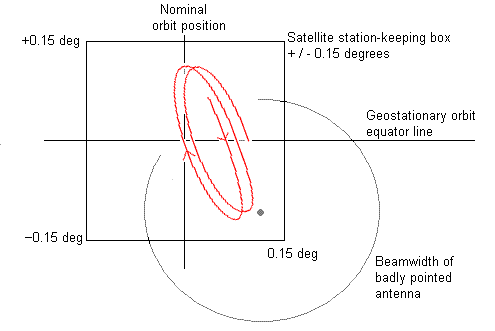| Home Login Register |
| Satellite Internet forum › iDirect Forum: hubs and terminals › Weak SNR Idirect 3100 |
|
Pages: 1
|
Weak SNR Idirect 3100(Read 8500 times) |
|
hitwao
Member
★★ Offline Posts: 7 |
Aug 1st, 2009 at 4:10am
|
| Back to top |
IP Logged
|
|
Eric Johnston
Senior Member
★★★ Offline Posts: 2109 |
Reply #1 - Aug 1st, 2009 at 10:19am
|
| Back to top |
« Last Edit: Aug 1st, 2009 at 6:03pm by Eric Johnston »
IP Logged
|
|
hitwao
Member
★★ Offline Posts: 7 |
Reply #2 - Aug 1st, 2009 at 3:18pm
|
| Back to top |
IP Logged
|
|
Eric Johnston
Senior Member
★★★ Offline Posts: 2109 |
Reply #3 - Aug 1st, 2009 at 5:52pm
|
| Back to top |
IP Logged
|
|
hitwao
Member
★★ Offline Posts: 7 |
Reply #4 - Aug 1st, 2009 at 7:03pm
|
| Back to top |
IP Logged
|
|
Ex Member
Ex Member
|
Reply #5 - Aug 1st, 2009 at 9:04pm
|
| Back to top |
« Last Edit: Aug 2nd, 2009 at 2:21am by N/A »
IP Logged
|
|
Eric Johnston
Senior Member
★★★ Offline Posts: 2109 |
Reply #6 - Aug 1st, 2009 at 11:09pm
|
| Back to top |
IP Logged
|
|
hitwao
Member
★★ Offline Posts: 7 |
Reply #7 - Aug 2nd, 2009 at 1:07pm
|
| Back to top |
IP Logged
|
|
Ex Member
Ex Member
|
Reply #8 - Aug 2nd, 2009 at 1:16pm
|
| Back to top |
IP Logged
|
|
hitwao
Member
★★ Offline Posts: 7 |
Reply #9 - Aug 2nd, 2009 at 1:51pm
|
| Back to top |
IP Logged
|
|
Eric Johnston
Senior Member
★★★ Offline Posts: 2109 |
Reply #10 - Aug 3rd, 2009 at 10:16am
|
| Back to top |
« Last Edit: Aug 3rd, 2009 at 2:23pm by Eric Johnston »
IP Logged
|
|
hitwao
Member
★★ Offline Posts: 7 |
Reply #11 - Aug 3rd, 2009 at 1:04pm
|
| Back to top |
IP Logged
|
|
Ex Member
Ex Member
|
Reply #12 - Aug 3rd, 2009 at 2:09pm
|
| Back to top |
IP Logged
|
|
hitwao
Member
★★ Offline Posts: 7 |
Reply #13 - Aug 3rd, 2009 at 3:36pm
|
| Back to top |
IP Logged
|
|
Ex Member
Ex Member
|
Reply #14 - Aug 3rd, 2009 at 6:15pm
|
| Back to top |
IP Logged
|
|
Pages: 1
|
Email me: eric@satsig.net
Powered by YaBB 2.5.2!
YaBB Forum Software © 2000-. All Rights Reserved.
Disclaimer, Terms of Use and Privacy Forum User Agreement Forum rules Cookie policy.



